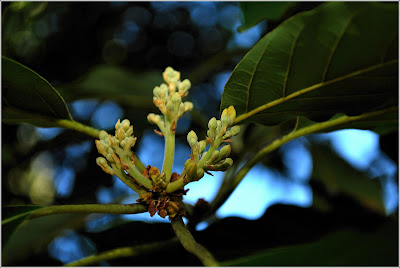In 2002, the tree to which every Hass Avocado in the world can trace its lineage finally succumbed to root rot at the ripe old age of 76. Her offspring account for 95 percent of the avocados grown in California, and the fruit of her labor resulted in one of the state's most important industries. Yet, despite speculation to the contrary, nobody knows what variety of seed produced the original Hass Mother Tree.
The tree began life as lucky-find; a simple seed planted by A.R. Rideout of Whittier. Rideout, an innovator and pioneer in avocados, was always searching for new varieties and tended to plant whatever seeds he could find, often along streets or in neighbors' yards.
In the late 1920s, Mr. Rudolph Hass, a postman, purchased the seedling tree from Rideout, and planted it in his new orchard. He planned to graft another variety on it, but when repeated grafts didn't take he planned to cut the tree down. Fortunately for avocado lovers everywhere, Hass's children talked him out of it. They preferred the taste of the tree's fruit to that of the Fuerte, the predominant variety and industry standard in those days.
Since the quality was high and the tree gave a good yield, Hass named the variety after himself and took out a patent in 1935. That same year, he signed an agreement with Harold Brokaw, a Whittier nurseryman, to grow and promote the Hass Avocados. They would split the gross income: 25 percent for Hass and 75 percent for Brokaw.
Brokaw began to propagate the rough, black Hass exclusively and promote it in favor of the standard varieties of the day. It made sense. The Hass was a far better bearer than the Fuerte and it matured at a different time of year. Because of the seasonal advantage, Brokaw was successful to the point of yearly sellouts of his nursery crops.
The patent expired in 1952, the same year Rudolph Hass died. But by then, the bumpy black avocado that bore his name was rapidly gaining in popularity on the smooth green Fuerte. Consumers preferred its richer, nuttier taste, while grocers favored it for its durability and longer shelf life. Today, the Hass accounts for about 80 percent of all avocados eaten worldwide and generates more than $1 billion a year in revenues in the United States alone.
The tree that launched an avocado revolution lived out her days in suburban La Habra Heights. Harold Brokaw's nephew Hank nursed her through more than a decade, trying to save her from root fungus. Hank lost the fight in 2002, and the tree's wood is currently in storage in a Ventura nursery awaiting the decision on a fitting commemoration of the original Hass Mother Tree.
Reference: http://www.avocado.org/the-hass-avocado-a-california-native/
Below are some pictures of my Hass Avocado tree on the south side of my property. We purchased our home 16 years ago and each and every year we would get hundreds of sweet beautiful avocados. We would have so many, I would give them to the neighbors, friends and even family up north and still had more than I could use in a year's time. Last year was the first year we didn't get a one. Due to the freezing weather of last winter, we did not even get a single blossom. Well, that has changed this year. There are thousands of blossoms, and come late summer, my tree should be full again. Of course our favorite is fresh guacamole, but I use them in so many different recipes, and it's so nice to just go out to the tree pick a few and in about a week they are perfect for use. So many people in this area of Florida have what we call "Florida Avocados". They are larger, the skin smoother and very moist inside, not even close to the true flavor of a Hass avocado.
Here is a family recipe for our guacamole. It's different than most I've seen, but it is seriously delicious.
In a Molcajete (Mortar and Pestle) mix the following:
2 Hass avocados
1 medium size Cubanelle Chili Pepper (char the chili under the broiler or on a hot skillet and remove the skin) small dice
1 tsp. Hellman's mayonnaise (yes, mayo)
1 Tbs. fresh finely chopped cilantro
1/4 tsp. fresh finely chopped garlic
1/2 Tbs. Lawry's Season Salt
1/2 tsp. Adobo
Fresh ground pepper to taste
1 tomato diced for topping
 |
| Mexican Molcajete this is identical to the one my Father bought me almost 30 years ago while visiting him in Los Angeles and still looks new. |
This is basically what my guacamole looks like when finished. I do not put lime in mine, but do use it as a garnish. Also, many people like onion in their guacamole, I do not. I want to focus more on the flavor of the avocado, not the onion. |



















































